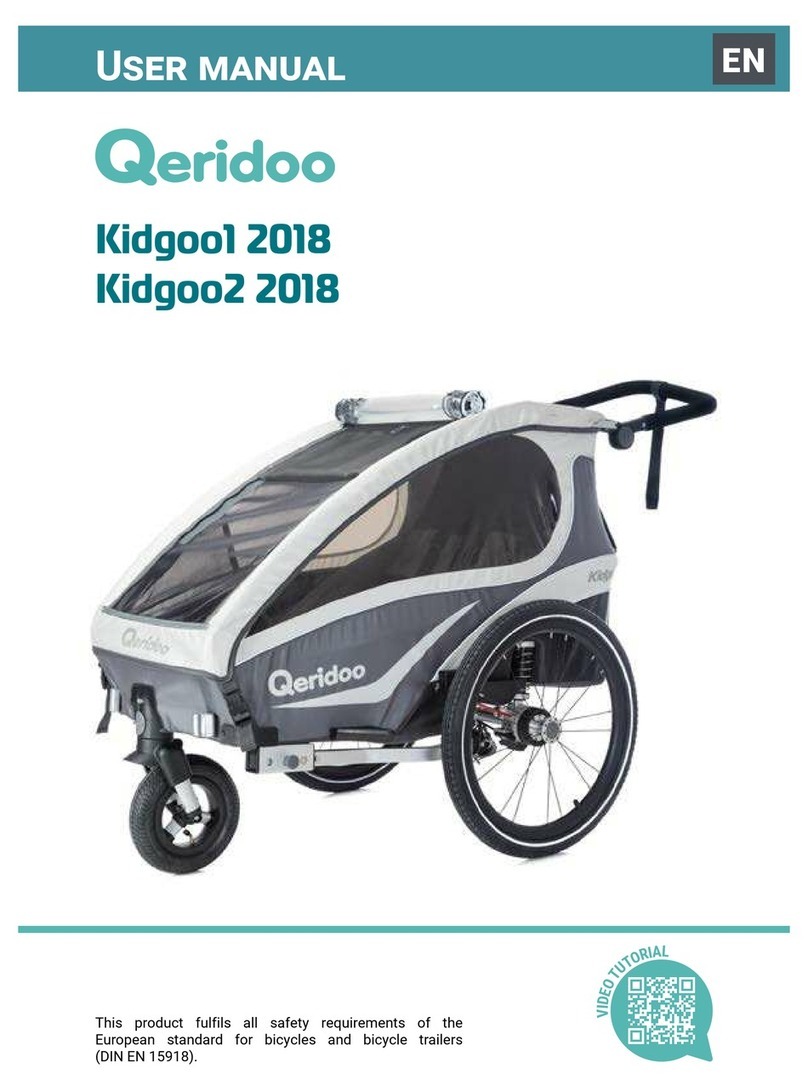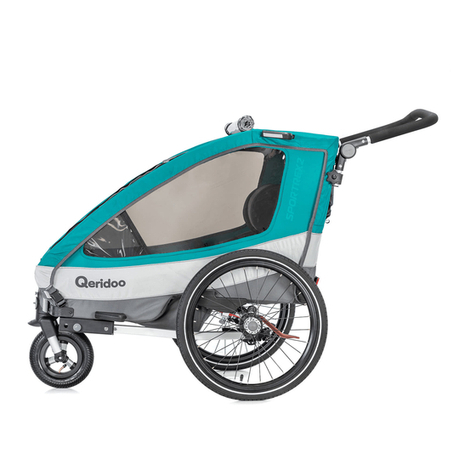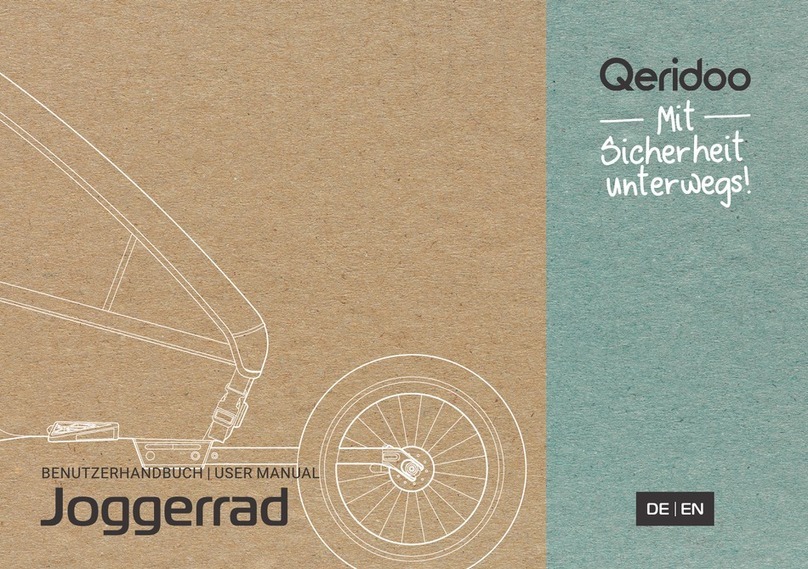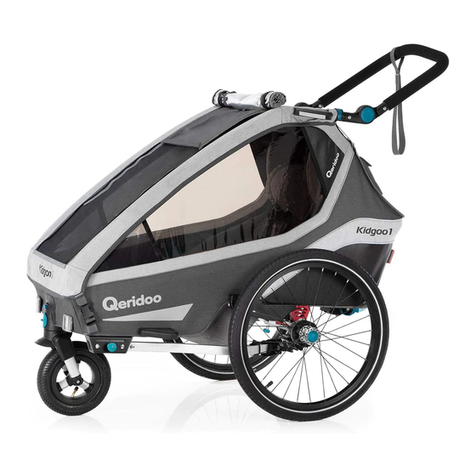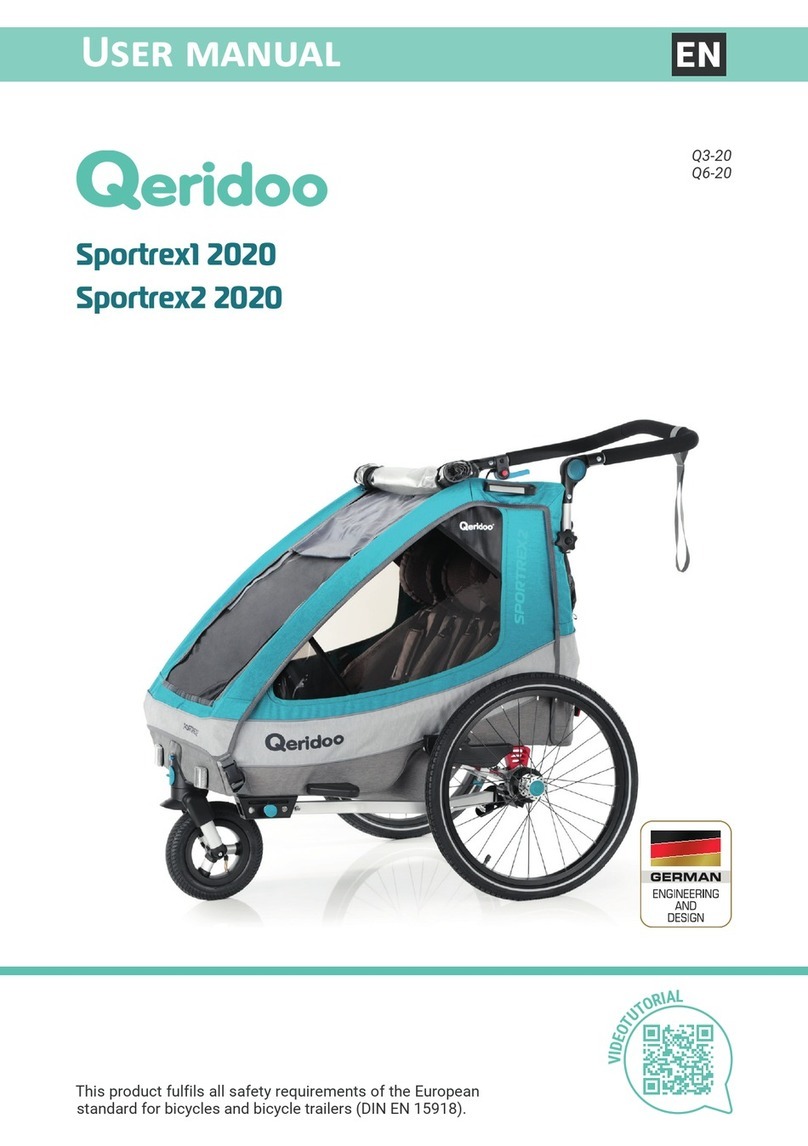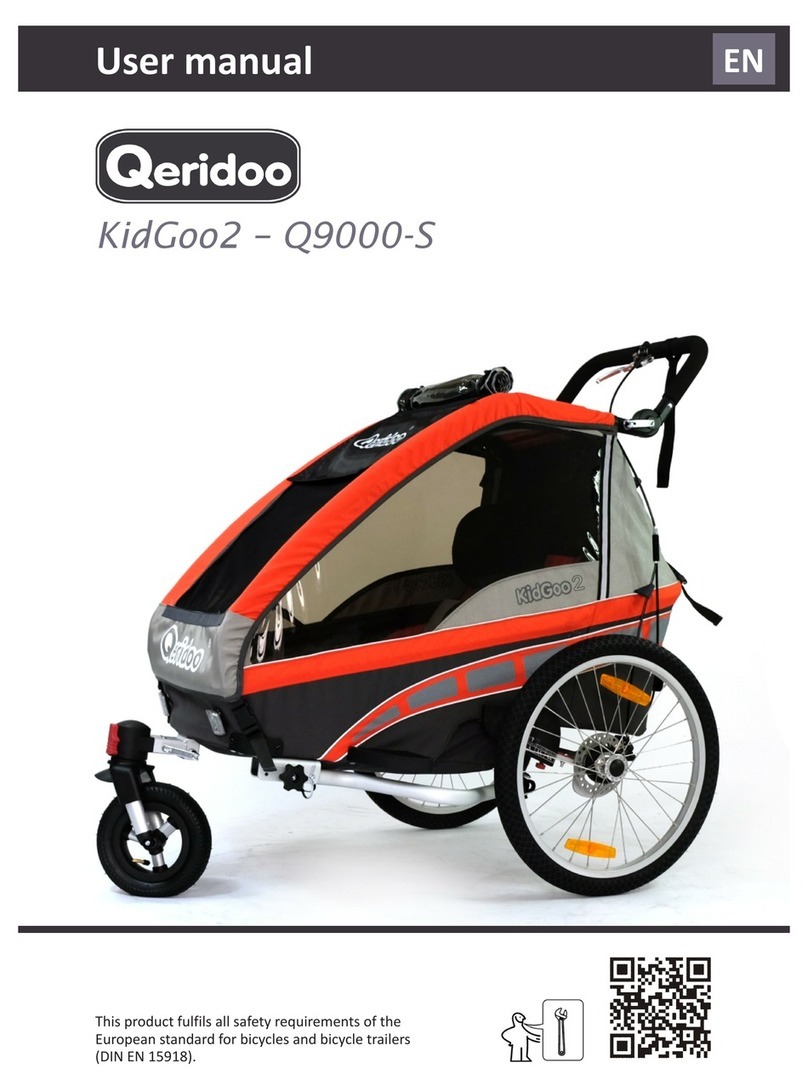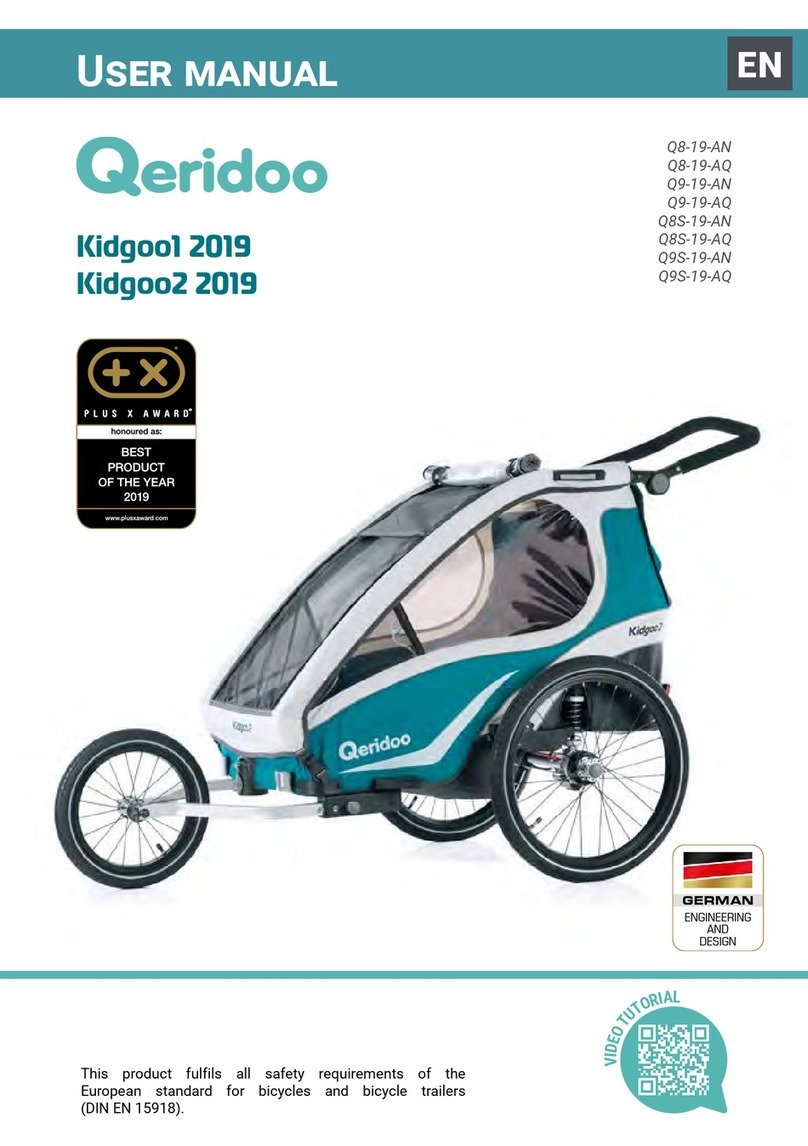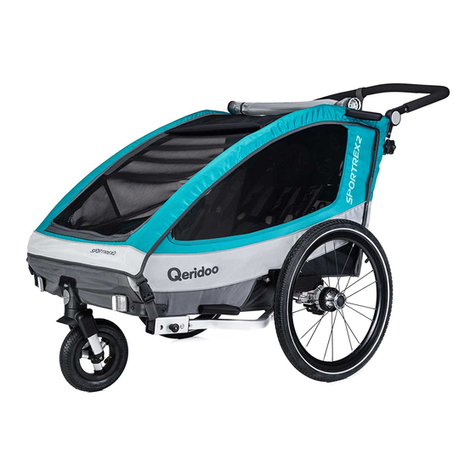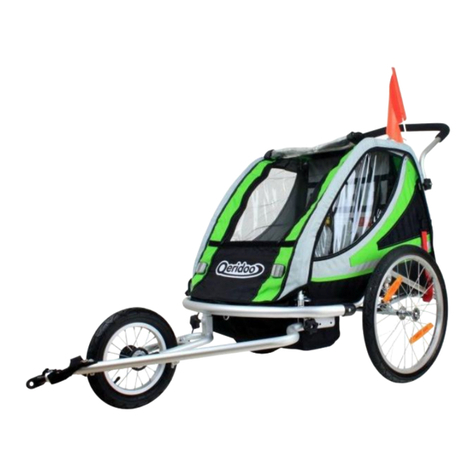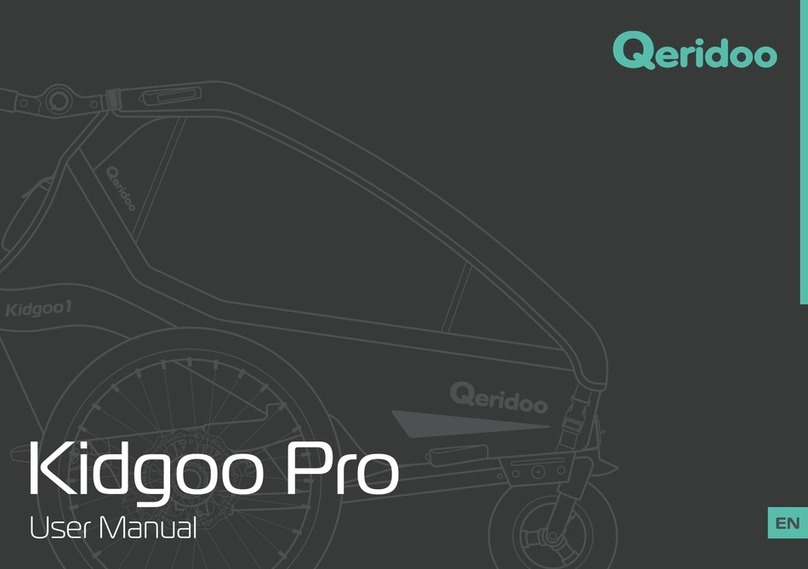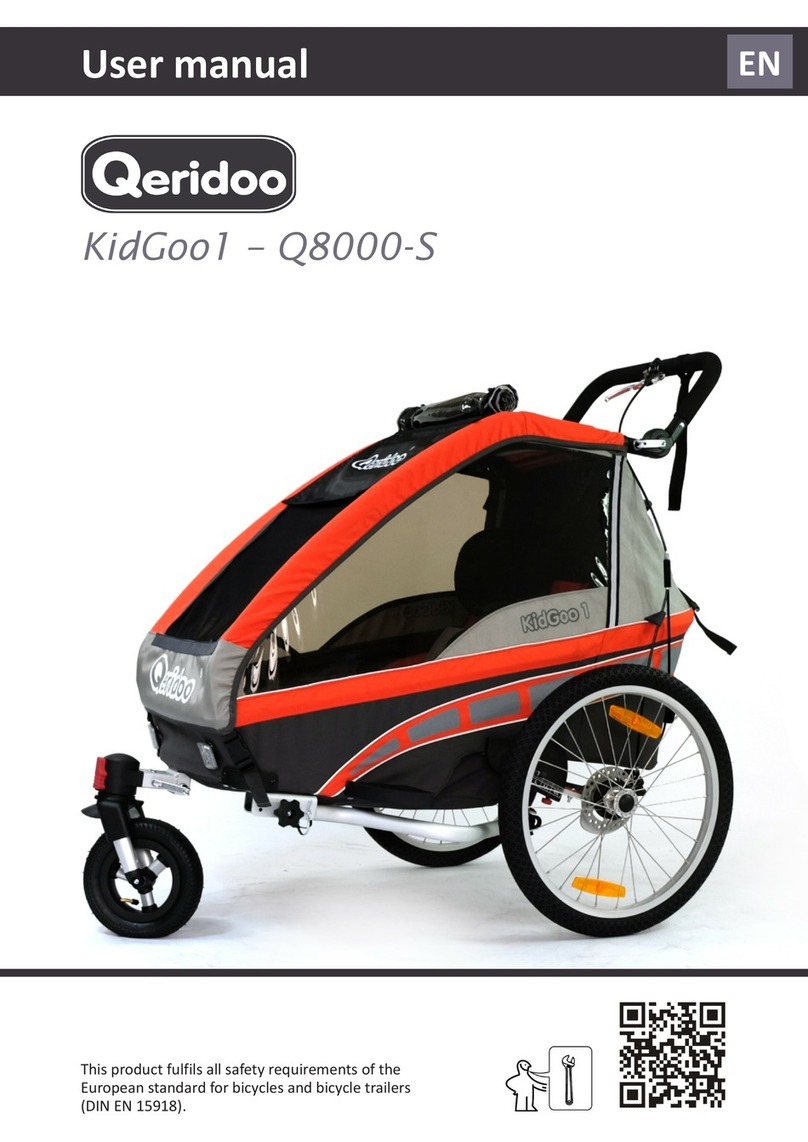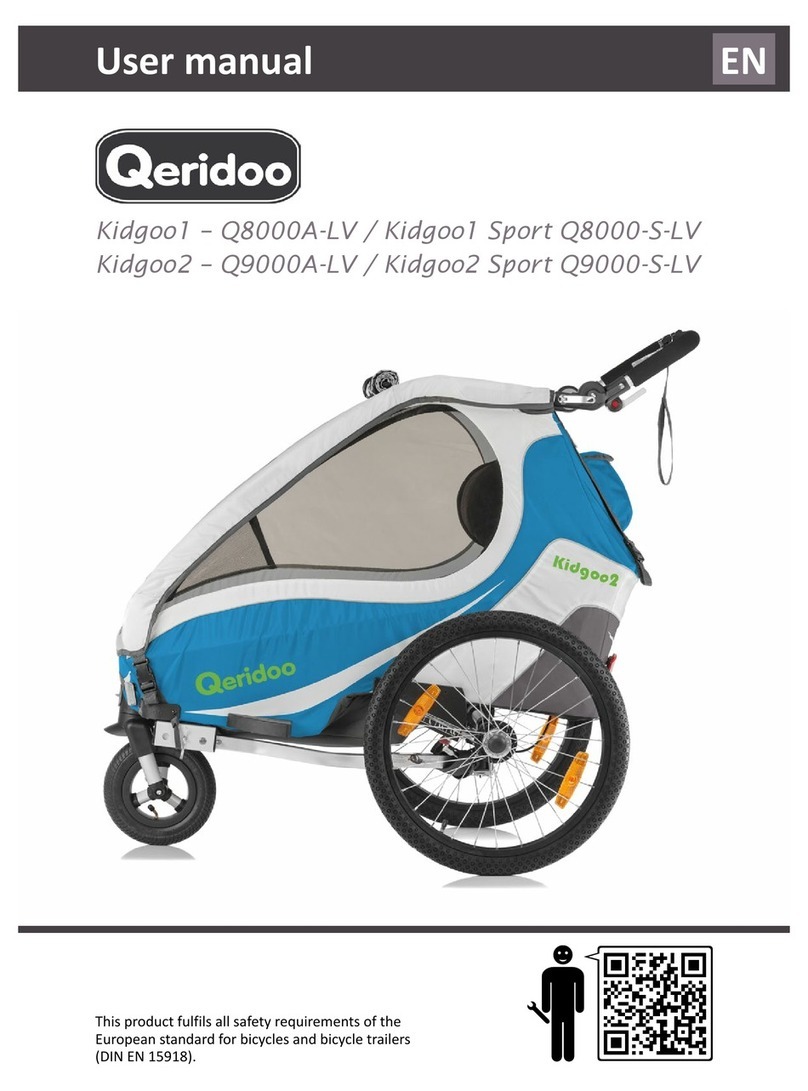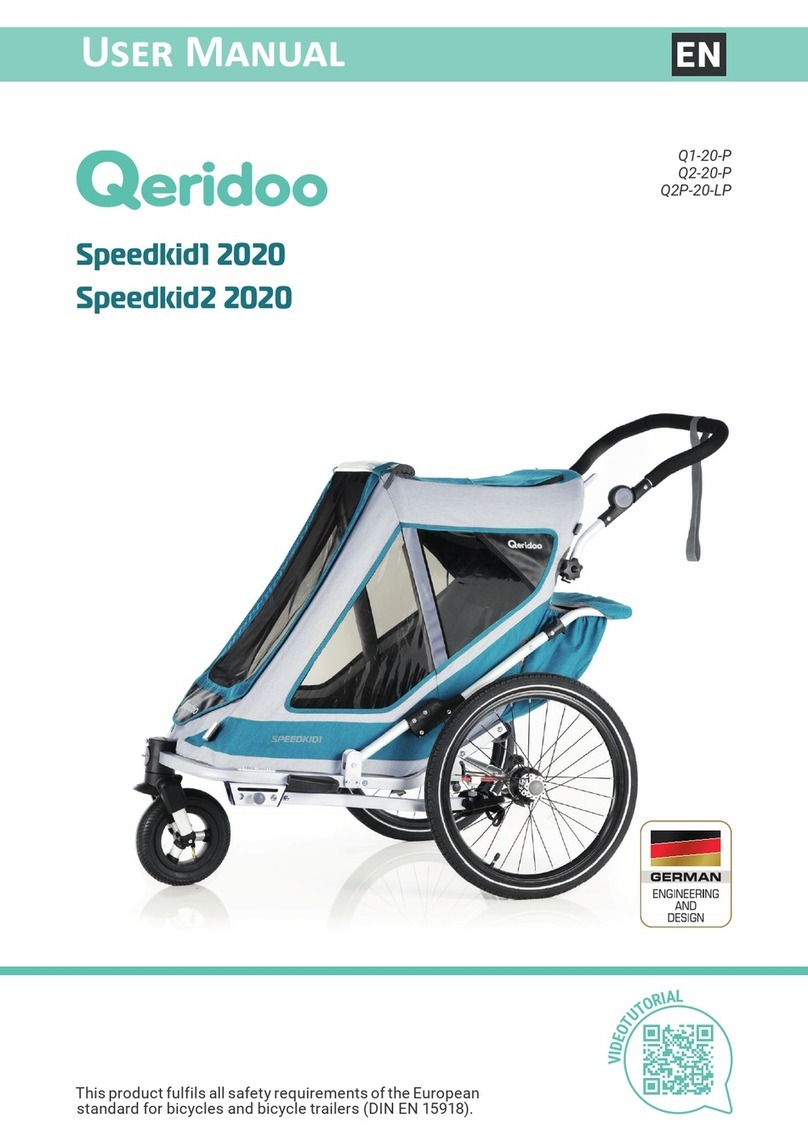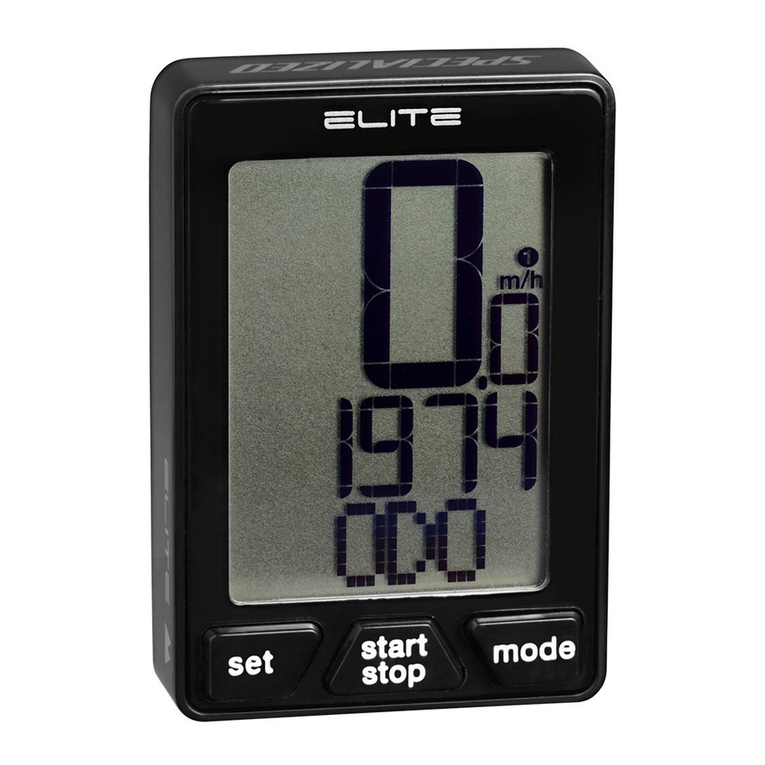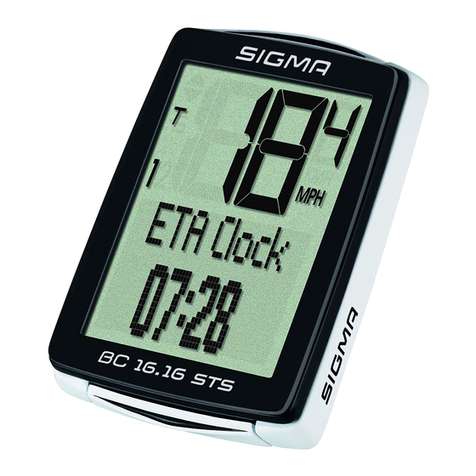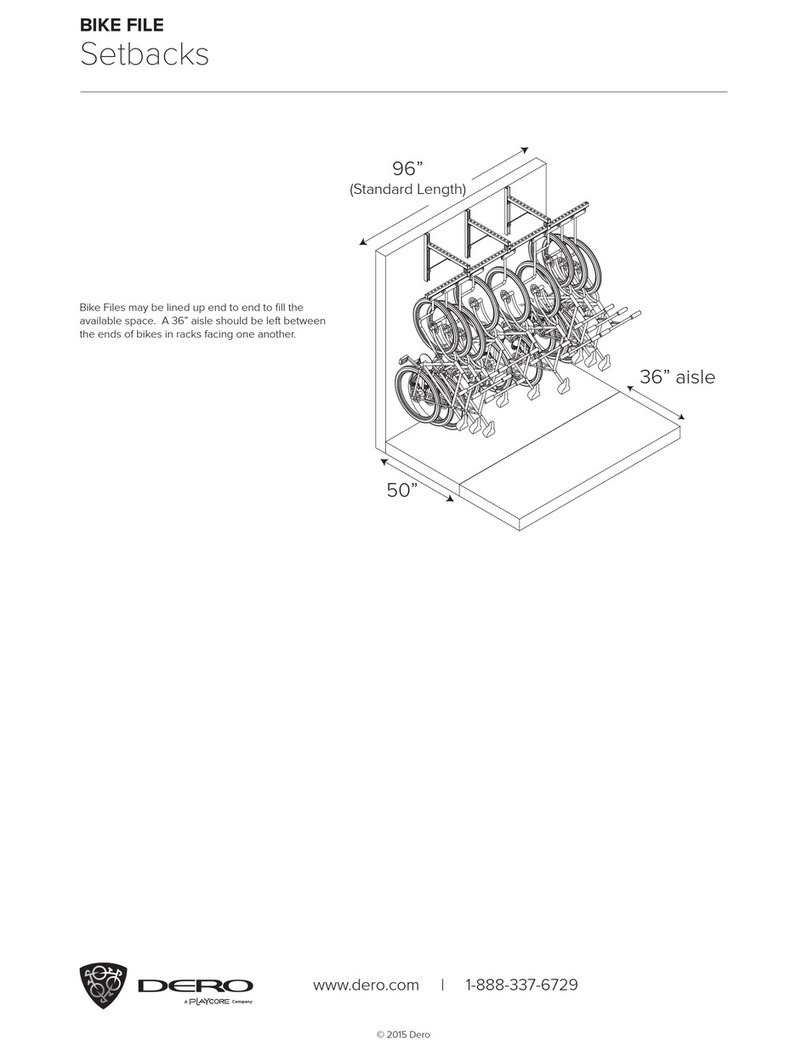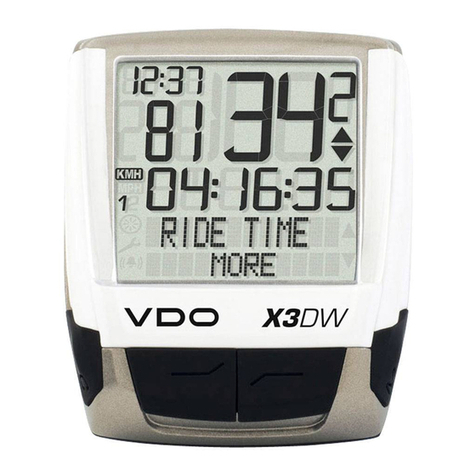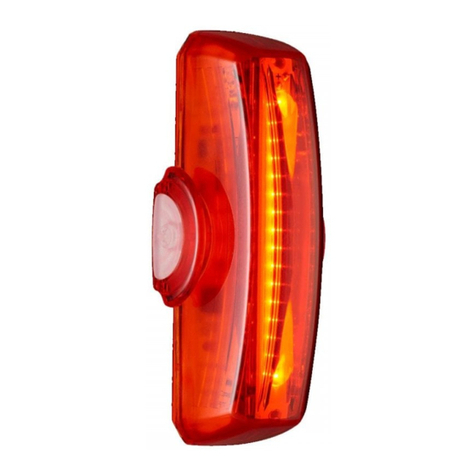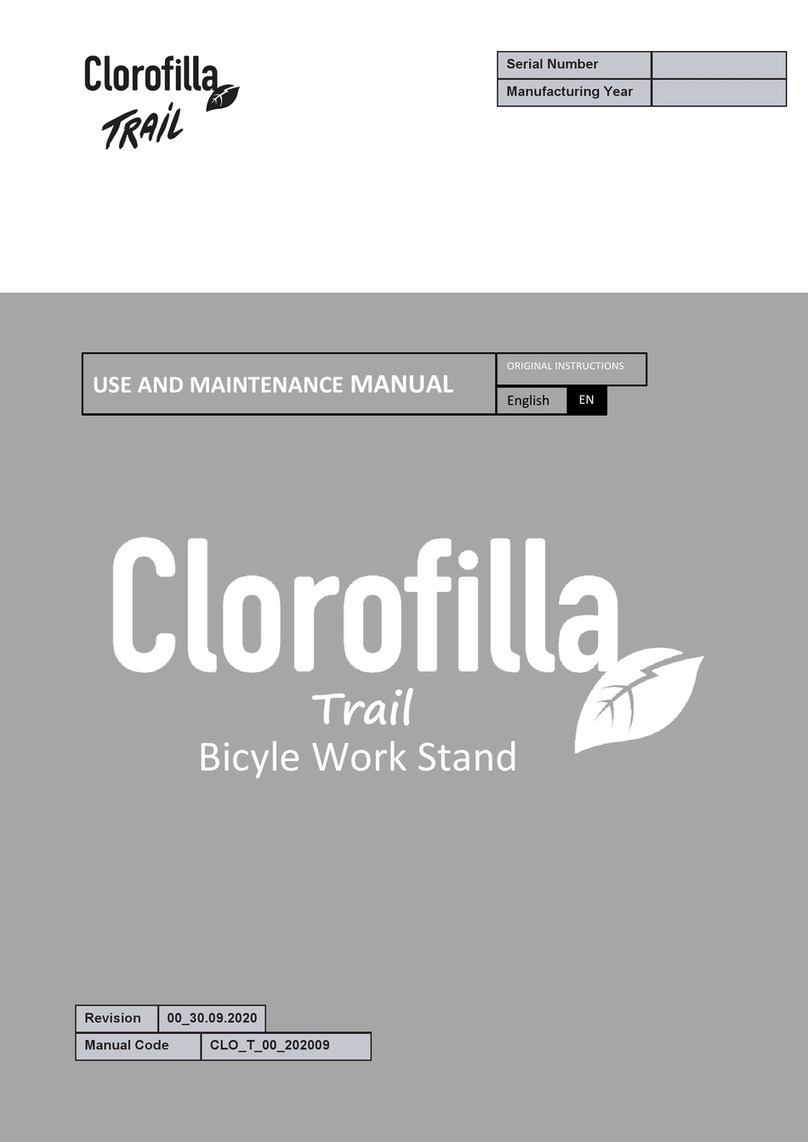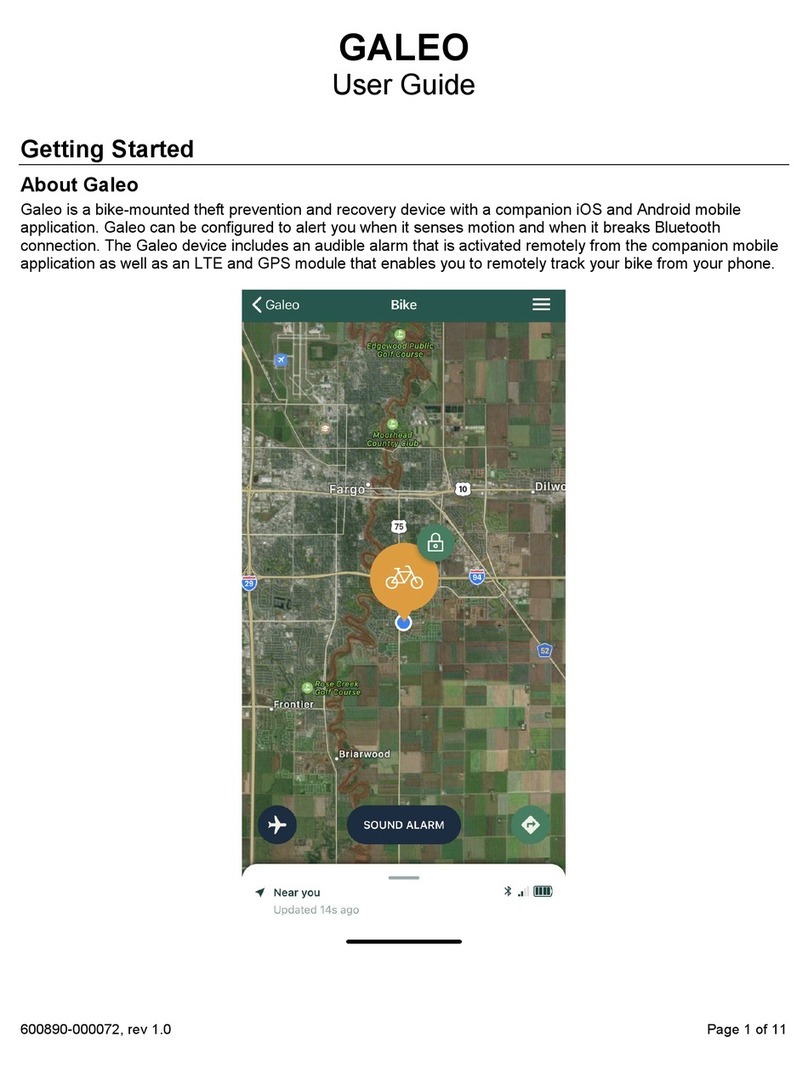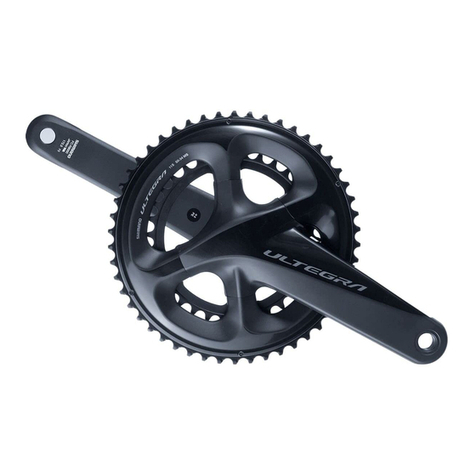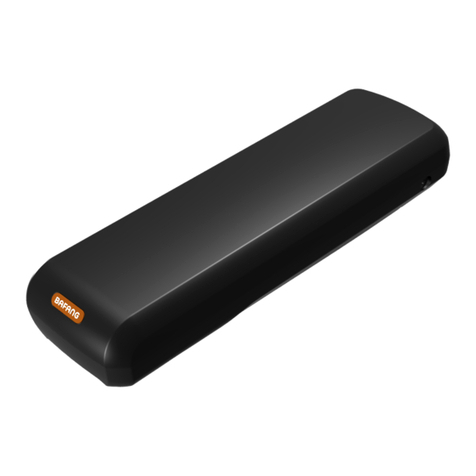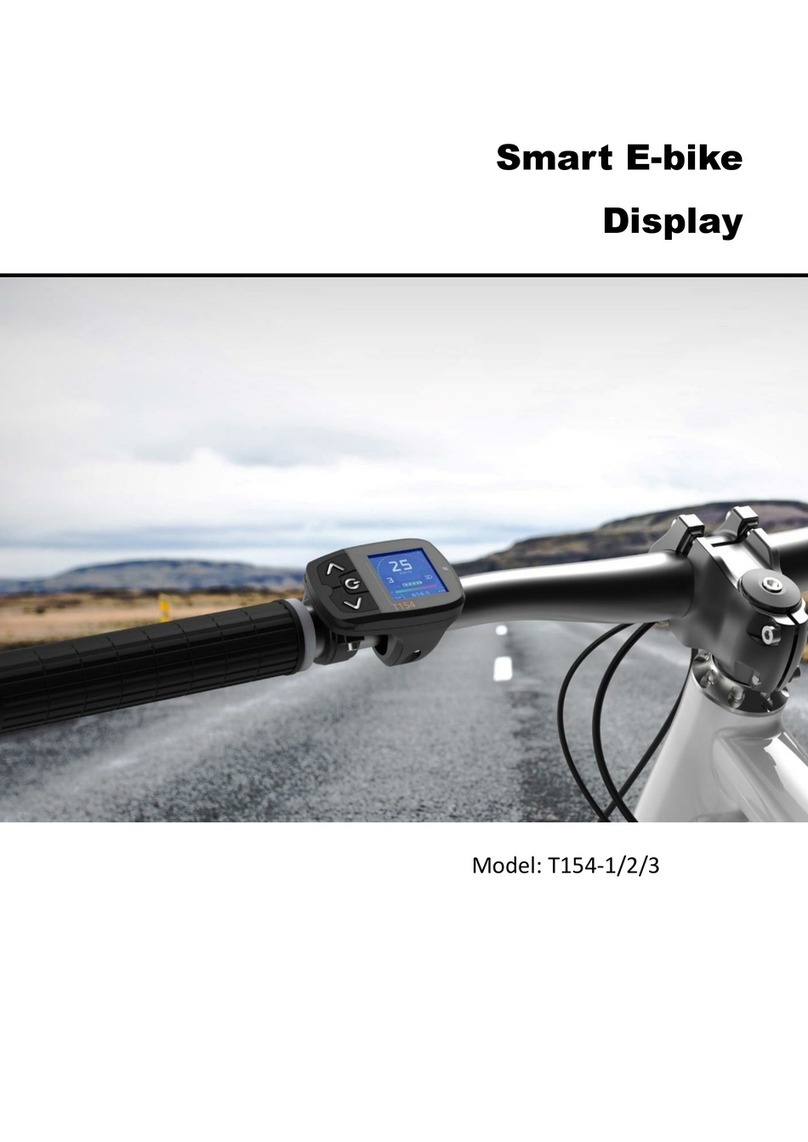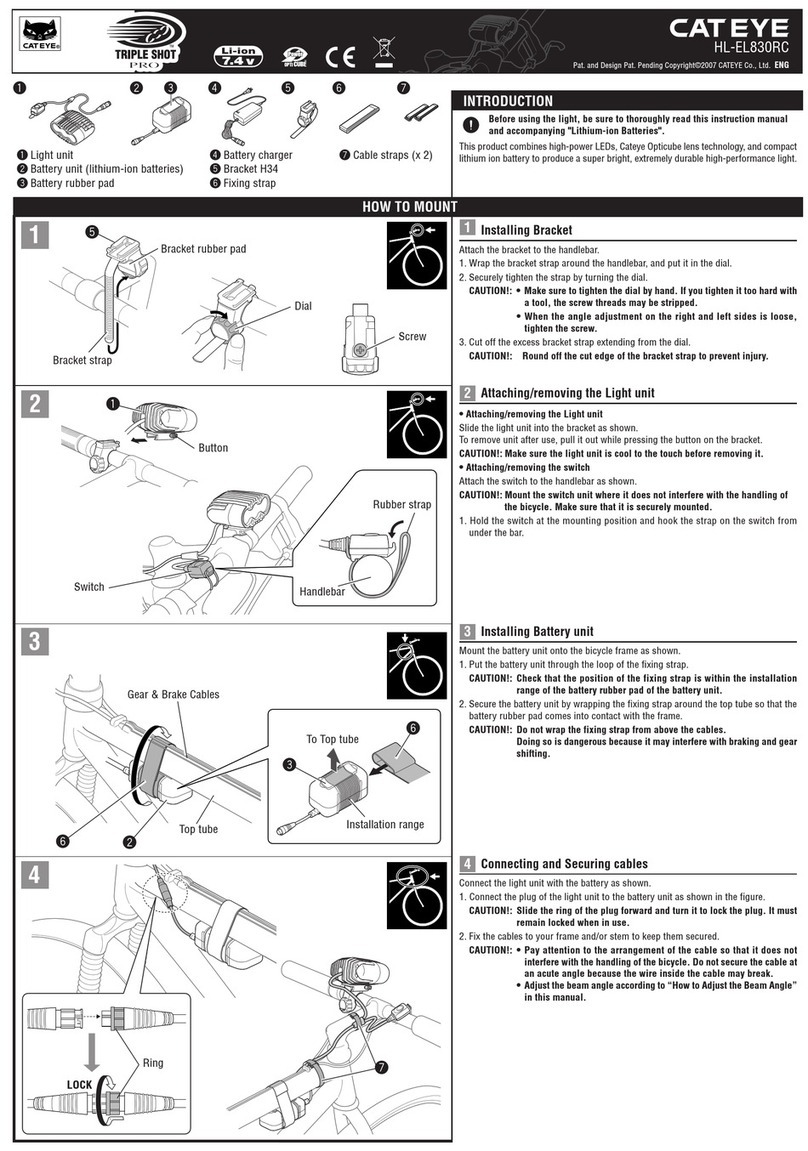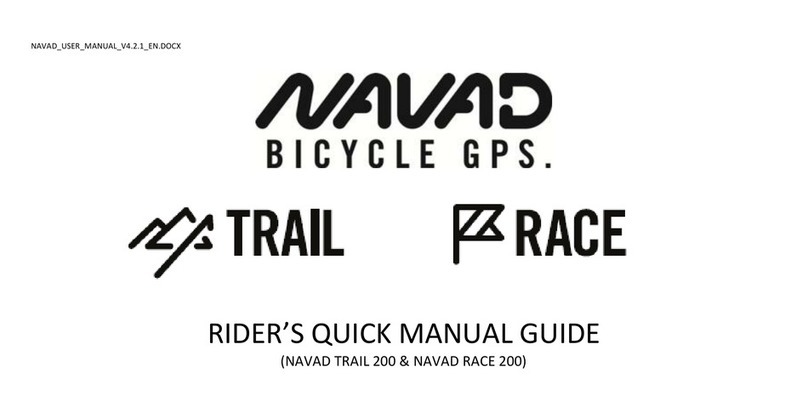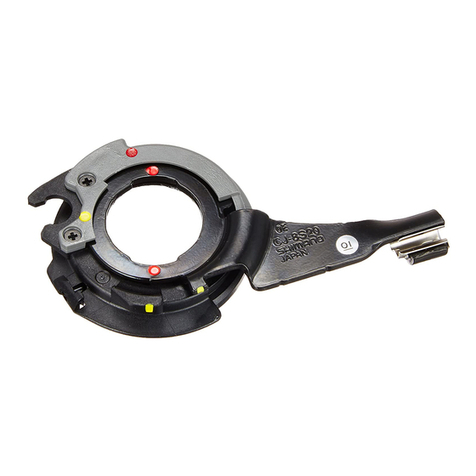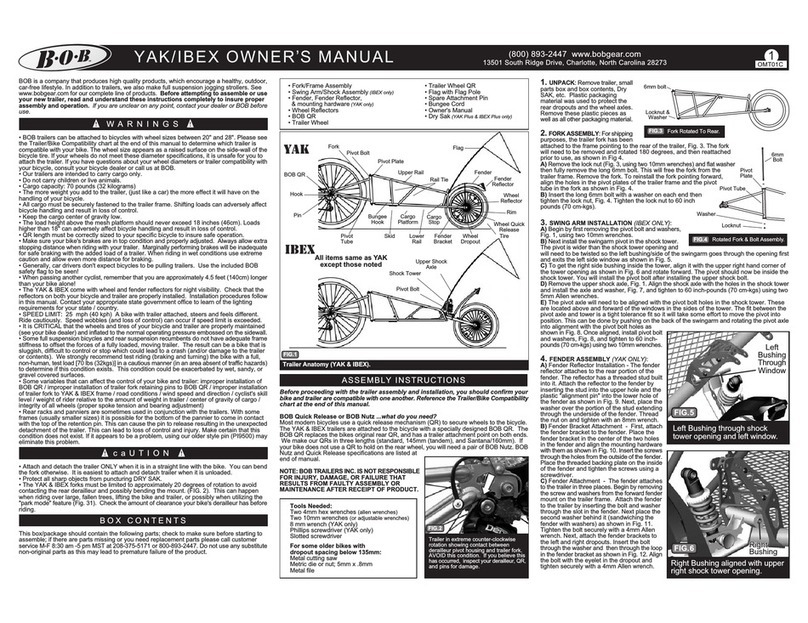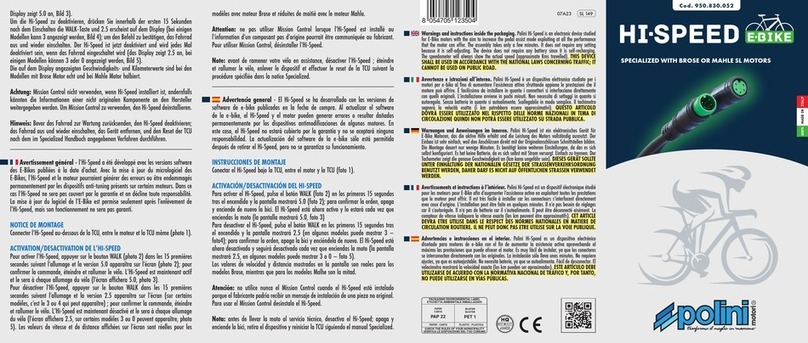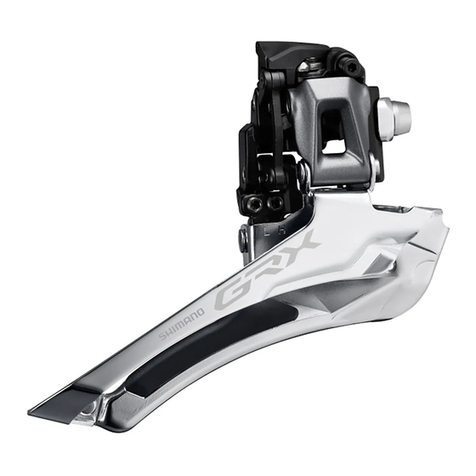Speedkid2 2018 Subject to change. 12|2017 – 7
The Speedkid2 can carry up to two children aged between 1 month and 6
years. Special accessories must be used in order to secure children who are
under 6 months old or who cannot sit upright independently,
see www.qeridoo.de/zubehoer.
So that they have sufficient headroom in all situations, the children must not
be taller than 116 cm.
Each child must be properly fastened in with a 5-point safety harness.
The children must wear bicycle helmets for every journey. This is also recommended for the
bicycle rider in Trailer mode in order to set a good example.
Before each journey, explain to the children that they must behave appropriately. Undoing
safety harnesses, excessive rocking or leaning out must be strictly forbidden.
Make sure that the cabin is well ventilated and make sure that the children are wearing clothes
appropriate for the weather conditions and the cabin’s inside temperature.
Never leave children unsupervised in the Speedkid2 and make sure that they feel comfortable.
Make regular stops during longer journeys to give the children the opportunity to get out and
move around. Make sure that they drink sufficient liquids.
As the towing vehicle, it is not permitted to use vehicles that must be registered such as
motorised e-bikes for speeds up to 45 km/h or vehicles with a combustion engine.
The bicycle or the pedelec (motorised for speeds up to 25 km/h) must be technically sound
and suitable for towing loads up to 60 kg. For details, read the towing vehicle’s manual or
consult a specialist dealer for a suitable inspection to be carried out.
Before every journey, test the function of the bicycle’s brakes, brake linings and tyres and
inspect them for wear. Check that the coupler is secure.
For carrying passengers, the bicycle should be equipped with a rear-view mirror. Working lights
conforming to the road traffic regulations are mandatory for journeys in darkness or conditions
of poor visibility.
Follow all instructions relating to the care and maintenance of the Speedkid2 and observe the
specified maintenance intervals, see „Care and maintenance“ on page29.
Use only original accessories and spare parts manufactured or recommended by Qeridoo.
Using other products relieves the manufacturer of liability.
Do not make any structural modifications or extensions to the vehicle. Any manipulation that is
not expressly approved by the manufacturer in writing relieves the manufacturer of liability in
the event of accidents and defects.
Follow the instructions in the chapter „Storage“ on page28 for storing the Speedkid2
properly when it is not in use.
A
C
C
E
S
S
O
R
I
E
S
